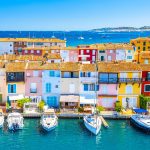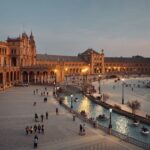Ephesus Travel Guide : All About Ephesus
Introduction
Ephesus Travel Guide : This guide is prepared by local guides of Turkey with the help of our guests around the world. In one hand it represents the complete guide of Ephesus Ancient City in terms of history, monuments, archaeology and art on the other hand it aims to give important hints to visit the site easily. Therefore before jumping the historical details we want to share first of all our experiences with you. With this Ephesus guide , you will be able to make the most of your visit, avoiding the crowds, escaping the heat, getting the best photo opportunities, and not missing out on any important sights.
How to visit Ephesus?
Best way to visit Ephesus is to join one of organized tours .
Virtual Tour of Ephesus (Free)
As the travel plans of so many of us collapsed with the spread of the coronavirus pandemic, the only possible way to visit the archaeological sites and museums is to go online and check which collections have already been digitized. In the case of Turkey, the Ministry of Culture and Tourism established Sanal Muze website that offers a 3D experience of some of the best-known state-run archaeological and ethnographic museums. The downside of this project is the fact that even though the museums offer descriptions of the exhibits, they are only available in Turkish at the moment. Click here to visit virtually Ephesus Ancient City
Turkey Tour Packages that include Ephesus
Short History
Ephesus was an ancient port city whose well-preserved ruins are in modern-day Turkey. The city was once considered the most important Greek city and the most important trading center in the Mediterranean region. Throughout history, Ephesus survived multiple attacks and changed hands many times between conquerors. It was also a hotbed of early Christian evangelism and remains an important archaeological site and Christian pilgrimage destination.
Legend Says…
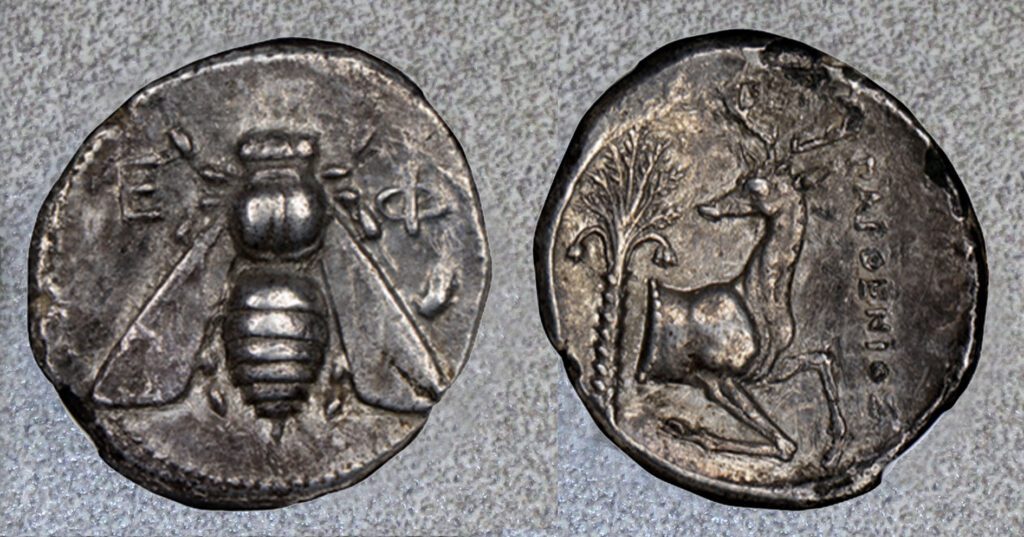
According to legend, the Ionian prince Androclos founded Ephesus in the eleventh century B.C. The legend says that as Androclos searched for a new Greek settlement, he turned to the Delphi oracles for guidance. The oracles told him a boar and a fish would show him the new location.One day, as Androclos was frying fish over an open fire, a fish flopped out of the frying pan and landed in the nearby bushes. A spark ignited the bushes and a wild boar ran out. Recalling the oracles’ wisdom, Androclos built his new settlement where the bushes stood and called it Ephesus. Another legend says Ephesus was founded by the Amazons, a tribe of female warriors, and that the city was named after their queen, Ephesia.
City of Anatolian Goddess : Artemis
Much of Ephesus’s ancient history is unrecorded and sketchy. What is known is that in the seventh century B.C., Ephesus fell under the rule of the Lydian Kings and became a thriving city where men and women enjoyed equal opportunities. It was also the birthplace of the renowned philosopher Heraclitus. The Lydian King Croesus, who ruled from 560 B.C. to 547 B.C., was most famous for funding the rebuilding of the Temple of Artemis in Ephesus. Artemis was the goddess of the hunt, chastity, childbirth, wild animals and the wilderness. She was also one of the most revered Greek deities. Modern-day excavations have revealed that three smaller Artemis temples preceded the Croesus temple. In 356 B.C., a crazed man named Herostratus burned down the Temple of Artemis. The Ephesians rebuilt the temple even bigger. It was estimated to be four times larger than the Parthenon and became known as one of the Seven Wonders of the World. The temple was later destroyed and never rebuilt. Little remains of it today, although some of its remnants reside in the British Museum, including a column with Croesus’s signature.
Lysimachus
In 546 B.C., Ephesus fell to the Persian Empire, along with the rest of Anatolia. Ephesus continued to thrive even as other Ionian cities rebelled against Persian rule. In 334 B.C., Alexander the Great defeated the Persians and entered Ephesus. Upon his death in 323 B.C., one of his generals, Lysimachus, took over the city and renamed it Arsineia. Lysimachus moved Ephesus two miles away and built a new harbor and new defensive walls. The Ephesian people, however, wouldn’t relocate and remained in their homes until Lysimachus forced them to move. In 281 B.C., Lysimachus was killed at the Battle of Corupedium and the city was renamed Ephesus again. In 263 B.C., Ephesus fell under Egyptian rule along with much of the Seleucid Empire. The Seleucid king Antiochus III took back Ephesus in 196 B.C.; however, after being defeated at the Battle of Magnesia six years later, Ephesus fell under Pergamon rule.
Ephesus Under Roman Rule
In 129 B.C., King Attalos of Pergamon left Ephesus to the Roman Empire in his will and the city became the seat of the regional Roman governor. The reforms of Caesar Augustus brought Ephesus to its most prosperous time, which lasted until the third century A.D. Most of the Ephesian ruins seen today such as the enormous amphitheater, the Library of Celsus, the public space (agora) and the aqueducts were built or rebuilt during Augustus’s reign. During the reign of Tiberius, Ephesus flourished as a port city. A business district was opened around 43 B.C. to service the massive amounts of goods arriving or departing from the man-made harbor and from caravans traveling the ancient Royal Road. According to some sources, Ephesus was at the time second only to Rome as a cosmopolitan center of culture and commerce.
Christianity in Ephesus
Ephesus played a vital role in the spread of Christianity. Starting in the first century A.D., notable Christians such as Saint Paul and Saint John visited and rebuked the cults of Artemis, winning many Christian converts in the process. Mary, the mother of Jesus, is thought to have spent her last years in Ephesus with Saint John. Her house and John’s tomb can be visited there today. Ephesus is mentioned multiple times in the New Testament, and the biblical book of Ephesians, written around 60 A.D., is thought to be a letter from Paul to Ephesian Christians, although some scholars question the source. Not every Ephesian was open to Paul’s Christian message. Chapter 19 in the Book of Acts tells of a riot started by a man named Demetrius. Demetrius made silver coins featuring the likeness of Artemis. Tired of Paul’s attacks on the goddess he worshipped, and worried that the spread of Christianity would ruin his trade, Demetrius plotted a riot and enticed a large crowd to turn against Paul and his disciples. Ephesian officials, however, protected Paul and his followers and eventually Christianity became the city’s official religion. Related: Ephesus guide
The Decline of Ephesus
In 262 A.D., the Goths destroyed Ephesus, including the Temple of Artemis. Some restoration of the city took place, but it never regained its splendor. In 431 A.D., a council was held in the Church of Saint Mary which confirmed the Virgin Mary as the mother of God. Emperor Theodosius erased all traces of Artemis during his reign. He banned freedom of worship, closed the schools and temples and forbade women many of the rights they’d enjoyed before. The Temple of Artemis was destroyed, its ruins used to build Christian churches. During the Byzantine era, Constantine the Great declared Christianity the official religion of all of Rome and made Constantinople the capital of the Roman Eastern Empire. This left Ephesus, a city already facing decline due to accumulating silt in its harbor, left to fend increasingly for itself. The city relied heavily on its iconic places of worship to attract visitors to support its struggling economy. Still, Ephesus was a port city with a deteriorating harbor and there was only so much that could be done to literally keep it afloat.In the sixth and seventh centuries A.D., a massive earthquake and the harbor’s continuing decline left Ephesus a shell of the city it used to be, and Arab invasions forced most of the population of Ephesus to flee and start a new settlement. Ephesus continued to deteriorate, although it experienced a brief period of growth and construction under the rule of the Seljuk Turks in the fourteenth century. The Ottoman Empire took final control of Ephesus in the fifteenth century; however, the city was in dire straits, its harbor practically useless. By the end of that century, Ephesus was abandoned, its legacy left to archaeologists, historians and the thousands of visitors to flock to the region each year to see the ancient ruins. Related: Ephesus guide
How and When to Visit
This is the most important question to find out before starting your almost 3 hours Ephesus visit. This is an overwhelming site, not only because of its size but also because you are processing tons of impressions simultaneously. It seems that there is something to capture wherever you look. Especially during peak hours, the combination of crowds, tour guides trying to tell (or even shout) their story, and the heat, can be a bit much. That is why we advise staying away during ‘rush hour’. Rush hours usually starts from 09:30 am when all cruise ships send their thousands of tourist to the port, you will see all hundreds of tourist buses in front of the site.
Which entrance? Upper or Lower Gate?
Ephesus has two entrance gates. The Lower Gate is the one nearest to Selçuk village and has a large parking lot where all of the tour buses await the day trippers. The Upper Gate has no parking space and is situated along the road that goes towards the House of the Virgin Mary. Despite the lack of parking space, this is still the gate where most organized bus tours start their visit to the site. The reason is quite straightforward: from this entrance, you have an easy walk down to the exit. In all honesty, if you decide to start at the Lower Gate, the climb isn’t such a big deal. If you take our advice to come early or late in the day, your advantage may be that you will only have to deal with big groups of visitors crossing your path for a short while. No matter which route you pick, you can exit on both sites. If you came by car, taxi’s and horses and carriage are awaiting you to take you back to the other end.Please note that there are paid audio-guides available at both entrances should you be interested in more background information while on a self-guided tour. Unless you are visiting Ephesus at peak hour, plan to go the main sights before you visit the rest of the site if you are there early morning. When arriving late afternoon, it is best to postpone the top sights(such as Celsus Library, The Hadrian Temple, and the view of the Curetes Street from the Hercules Gate)
Best Itinerary and Monuments
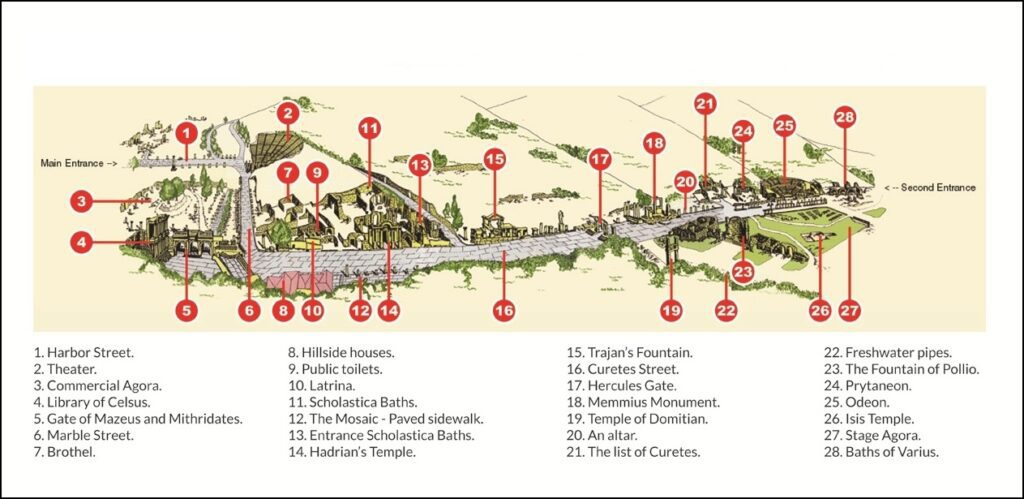
1- Harbour Street
It is one of the three main streets of Ephesus. Harbor Street starts from the theater and end at the harbor. It is 530meters long and there were shops and crosswalks on both sides. This street is also called “Arcadian” and it is about 11 meters wide. It was very close to the harbour and there was ‘Four Columned Monument’ at the end of the street.
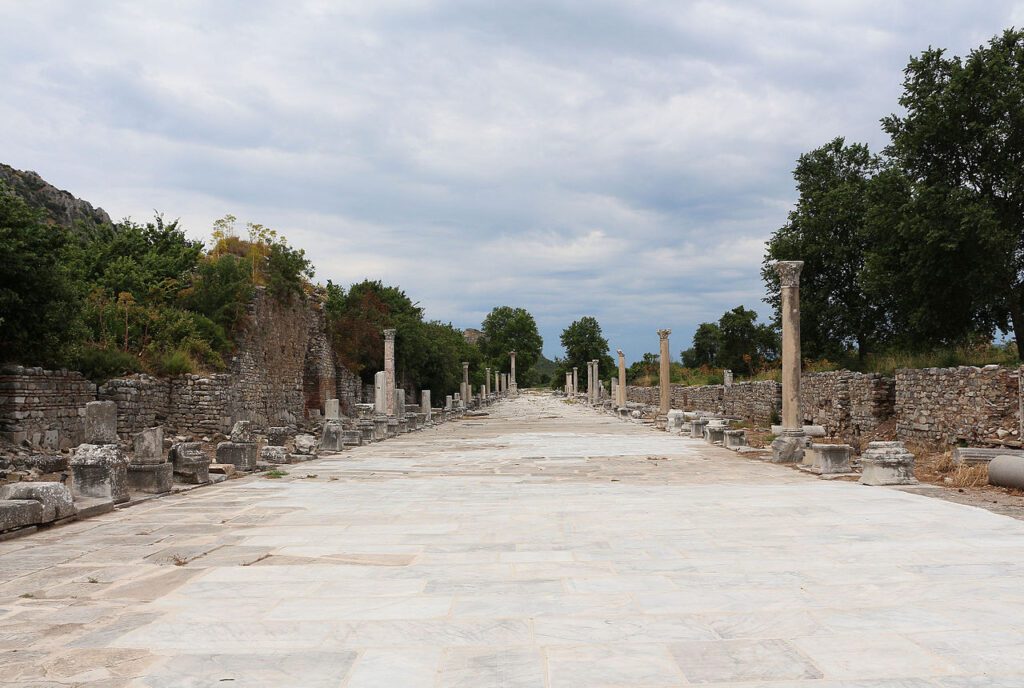
On each of these columns the statues of the four Evangelists was situated. This street is also known to be lightened at nights. Holes were made on the columns in order to put torches in it. The Gymnasium takes place on the right of this main street. This was the high school of Ephesus. Next to the harbour there was a huge Roman Bath. Near the Roman Bath there is the Church of Virgin Mary, which was built as a pagan high school but converted into a Church in the 4th Century AD. It is the first church ever named after the Mother of Jesus Christ. This Church is also called Ecumenical Council Church because the 3rd Council held in this structure in 431 AD in Ephesus.
2- The Great Theater
It is the biggest ancient theater in Turkey with a capacity of 24.000 seats. It was built 4th Century BC. It took 60 years to build this huge Theater of Ephesus. It was a Greek Theater which had been converted into a Roman Theatre. There was a three storied stage building, erected in different times and paid by different Roman Emperor. Related: Ephesus guide

The Stage was added in the Roman Period. The drainage for rainwater is still visible. This Theater is also the place where St. Paul was protested by the Silversmith Demetrius and his friends. There was a big demonstration against him as he was against Goddess Artemis. Today this Theater is also famous for modern events and concerts. Popular singers such as Elton John, Chris de Burg, Lionel Richie, Joan Baez, Julio Elyases, Pavarotti, Sting and Madonna gave concerts in this Theater of Ephesus.
3- Commercial Agora or Lower Agora

It is one of the two Agoras located in Ephesus with 11,000 sqm of size. There were shops on 4 sides of the Agora. It was built on the Hellenistic period and enlarged on the Roman period. It was the biggest shopping area on that period. St Paul worked as a tent maker in the Commercial Agora with Priscilla and Aquila. In the Hellenistic time the Commercial Agora of Ephesus was open only one day of the week. In the Roman Period the Agora was open every day. It was very close to the port and there was a direct connection to the Harbour Street. On four sides there were columned galleries and the floor was paved with mosaics. The center of the Agora was uncovered and paved with marble slabs. There was the Serapis Temple at the north of the Agora. This temple is the second Egyptian temple in Ephesus.
4- Celsus Library
Library of Celsus is one of the symbols of Ephesus. It was built by Aquila for the famous governor Celsus as a monument and library. It is the third largest library in the ancient times. It is said that there were 12.000 papyrus rolls in Celsus Library. It was destroyed in an earthquake and was rebuilt according to the original on the restorations held between 1970 and 1978.

Celsus Library is the first example of a Grave Monument-Library. After a short time the second one was built in Sagalassos. The tomb of Celsus is under the central niche of the library. In the 3rd Century AD Goths burnt the library. In the 11th Century AD an earthquake destroyed the structure. The copies of the four women statues are visible today. Originals are in the museum of Vienna. In the second story there are basements. On each of these basements three bronze statues of Celsus and one statue of Aquila were situated. Both Celsus and his son were Proconsuls of Ephesus. But they are not found. Faces of Medusa who is related to death can be seen on the top of the Library.
5- Gate of Mazeus and Mithridates
This gate is located next to the Celsus Library and opens to Agora. It was built by the slaves Mazeus and Mithridates 2000 year ago for Roman Emperor Augustus. Mazues and Mithridates were both architects.Then they became slaves of the imperial family of Augustus.

6- Marble Street
It is one of the main streets of Ephesus. It starts in front of Celsus Library, passes Theatre and reaches to the Temple of Artemis. The Library and the Agora are on the right side of the Marble street. Brothel is on the left side of the street. Further on the right there is the theater and further to its left there is a gymnasium. It also cuts the Port Street.There is marble pavement, reserved for chariots in the middle of the street is. On the right there is a covered gallery area carried by marble columns for pedestrians just behind the stores. On the left there is on a podium a side walk for pedestrian, which was also covered. This was a gift of the Roman Emperor Nero to Ephesus. It is here that you can discover what people believe to be the oldest advertisement in the world. It points out to the Private House, a hidden (but not so secret) brothel. The carvings in the marble show a distinct image of a foot, together with an image of a cross, a heart, a woman, a purse, a library, and a hole in the rock.

There are different interpretations of course, but in general, researchers agree that it has to be something along the lines of this: on the left at the crossroads, you can purchase women’s love. The footprint and the hole were a test to know if you were eligible to buy their love. If your foot was at least as big as the one carved into the marble, and you had enough coins to fill the hole, you were good to go. If not, then there was alternative and more enriching entertainment at the library. Related: Ephesus guide
7- Brothel or House of Joy
Opposite the Agora was the House of Joy or brothel. A part of the Scholastica complex that also includes the Latrines, and the Baths. The House of joy is a euphemistic term for a brothel, which many believe this place was. The idea is probably supported by the fact that a statue of Priapus with an enormous phallus was found here. Nowadays, there isn’t much left of it. It was a large two-story building including a kitchen, a bathroom and a toilet.
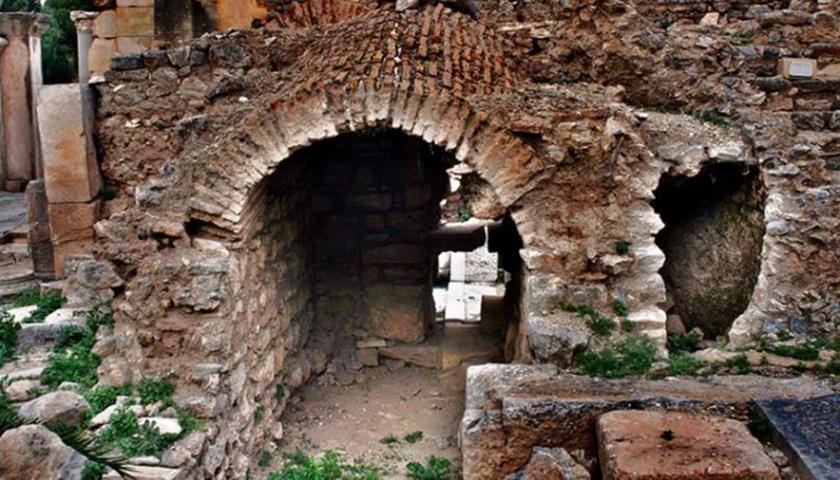
There are some very beautiful mosaics on the walls of this building. This Brothel of Ephesus was facing the famous Celsus Library. First this was a holy place and Priapus god of love and fertile worshiped in here. His father is Dionysus and his mother Aphrodite. Later this place lost its religious character and became a brothel where slaves had to work.
8- Terrace Houses or Hillside Houses
These luxurious Terrace houses used by the wealthy Ephesians between 1st Century AC to 7th Century AC. Terrace houses section 2 was covered in 1999 and protected. These magnificent houses, mosaics and frescos can be visited since 2002.
Do not miss this visit: Entrance to the Terrace Houses is not included in your Ephesus entry ticket. In fact, even most organized tours do not visit the Terrace Houses. Don’t miss this visit.

Excavations were done from 1960 to 1985. There were 6 flats at Terrace House 1 were and 7 flats at Terrace House 2. Each flat has three storey. The size of each house was different. In the middle of the each flat there were a court (atrium) and rooms surrounding an open air court which was marble paved. There were mosaic and terracotta floored rooms and wells in the courts. Each flat had a living room, bedrooms, bathroom, restrooms, kitchen and storage rooms. There were paintings on the walls of the houses and the themes of the paintings were divinities and mythological stories. Things found in the excavations are displayed in the Ephesus Museum, Selcuk. Related: Ephesus guide
9/10- Latrinas or Public Toilets
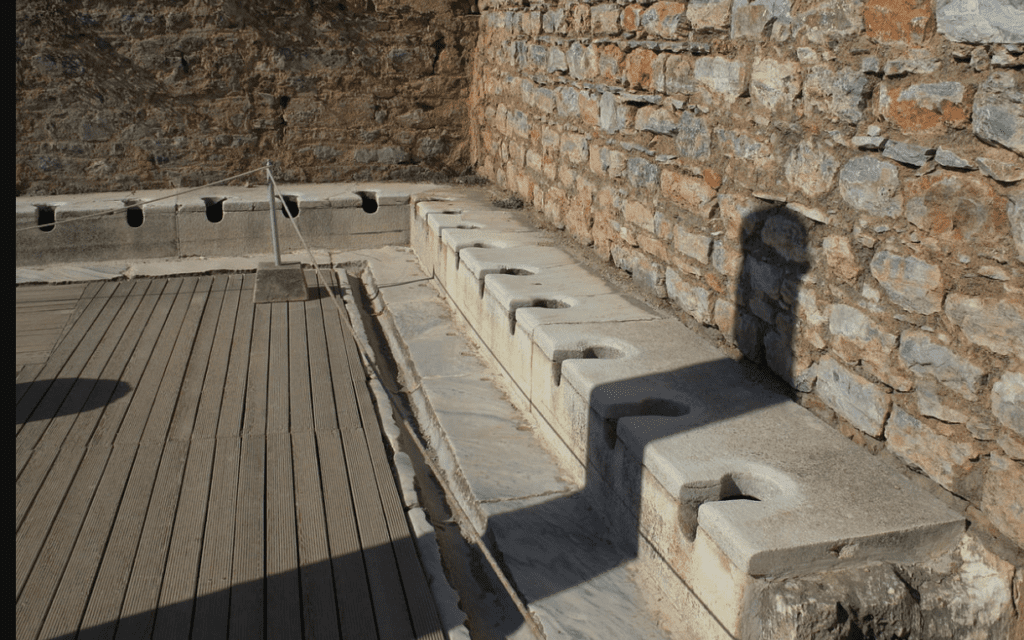
These were the only public toilets in Ephesus and it is said that they were for man. Toilets are very well protected. There should be another public toilet for women in Ephesus which hasn’t been found yet.There were 44 holes on the three sides of Ephesus. There was a fresh water channel just in front of the holes. There were mosaic paved floors. There was an open-air pool in the center. People had to pay entrance fees to the public toilets.
11/13- Scholastica Baths
It was a beautiful Roman Bath complex located in the centrum along the Curetes Street, Ephesus. It was restored by a rich Christian woman named Scholastica after the earthquake in the 4th Century. There is a statue of Scholastica in the bath. Every room of the bath can be seen.

This Bath had four sections. The first section was called Apotheterium which was the dressing room. The second section was called Frigidarium which was the cold water bath. The third room was the Tepidarium which was the section of lukewarm water. The last section was named Caldarium which was the hot section of the bath complex. In the Tepidarium there were a basement and bronze statues of Donaters on the basements. The Scholastica Bath is in the center of Ephesus facing the Terrace Houses.
12- Paved sidewalk with mosaics
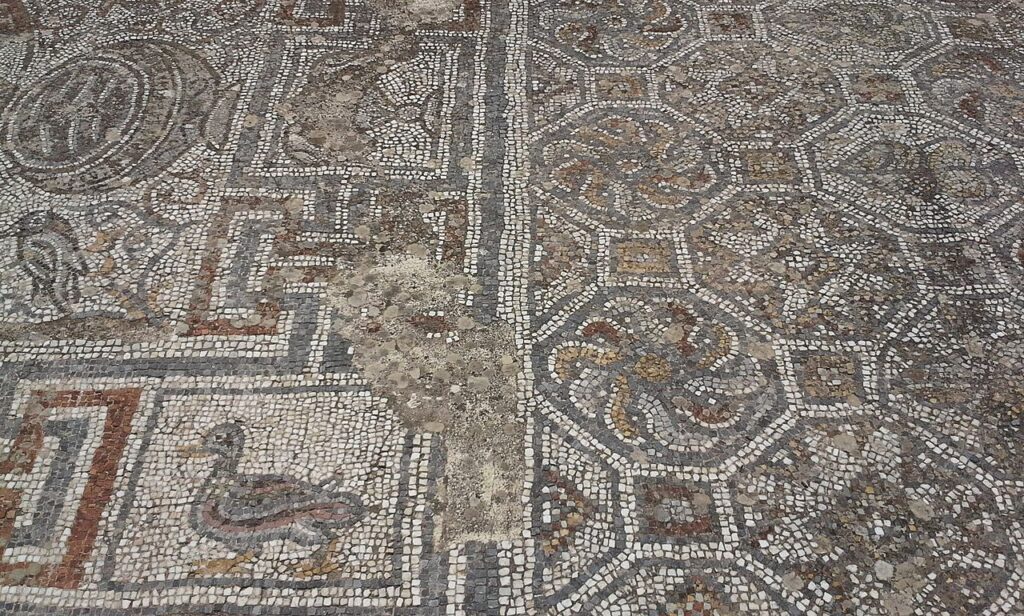
This was the area for the pedestrians which belongs to the 5th – 6th centuries. These mosaics are located in front of the Terrace Houses. At the Curetes Street which was one of the main streets of Ephesus, there were paths on the each side.In the middle there was a marble paved main road for chariots. Behind the sidewalks there were stores on both sides and finally the terrace houses on the slopes. The Mosaics on the side walks are displaying a great workmanship.
14. Hadrian’s Temple
It is one of the Roman Emperor Temples. Hadrian the Emperor of Rome visited Ephesus twice. Such a beautiful Temple was built honor of him in the 2nd Century AD. Hadrian’s Temple is one of the best ruins in Ephesus and was restored recently. The Hadrian’s Temple was converted into a Christian church in the 4th Century AD.
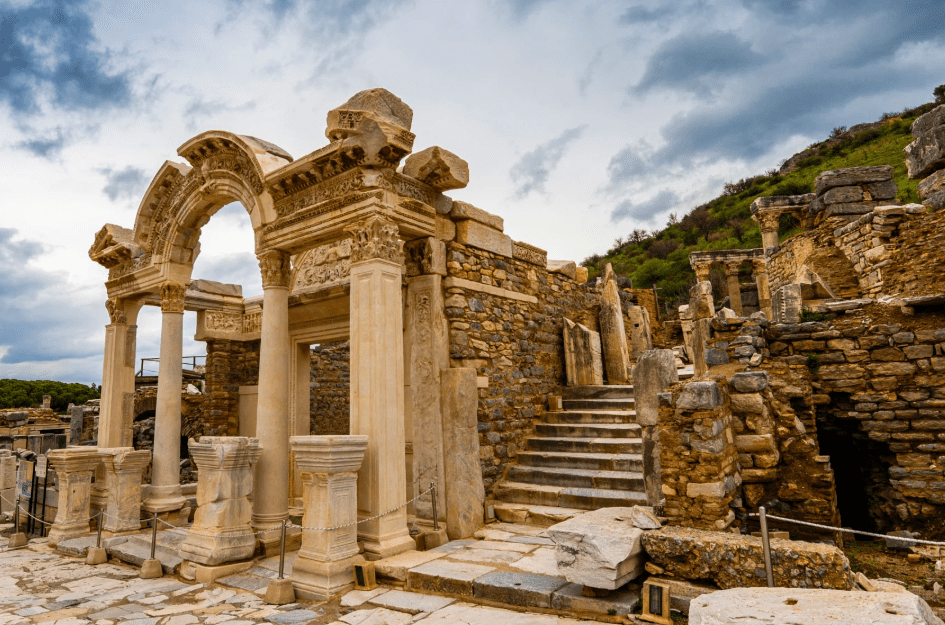
There are great friezes on the temple displaying a wonderful craftsmanship. The bust of Tyche is visible on the arch. Tyche is the goddess of fortune that’s why her Roman name is Fortune. Inside the frieze Medusa is visible. Also other friezes are telling about the Amazons, Androklos and the Imperial family which are visible. The last mentioned ones are pilasters and the originals are in the Museum in Ephesus/Selcuk. In front of the temple there are four basements. There were statues of Roman Emperor on each of them. Related: Ephesus guide
15- Trajan’s fountain
It is the only monumental fountain in Ephesus, built for a Roman Emperor. It is located on the Curetes Street and built in the beginning of the 2nd Century. It is 9 and half meters tall with 2 storey. It was dedicated to Trajan the Roman Emperor and Goddess Artemis.
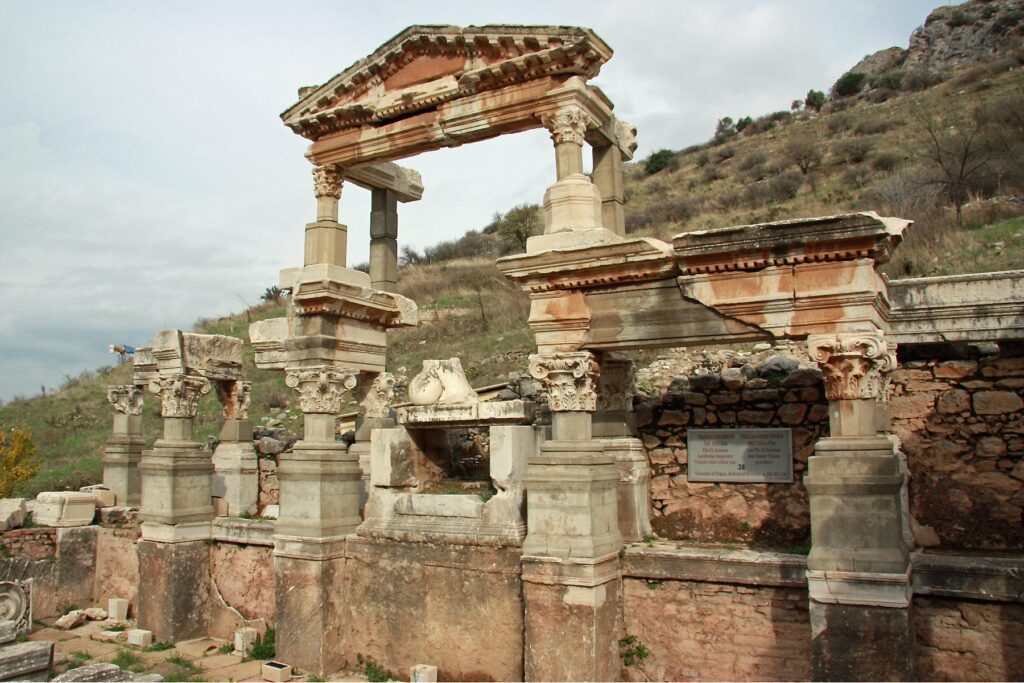
In the Roman period Ephesians built a 39 km long aqueduct to supply water. This aqueduct arrived Ephesus were Trajan’s fountain was erected. Water was running into to the center of the pool where the huge statues of the emperors were situated. Today only feet of the statues are visible. The statue of Trajan was three times bigger than other statues, since he was a God. Other Statues found in the excavations are displayed in the Ephesus museum. The final restoration in Trajan’s Fountain made in 1958. There are main pool and smaller second pool. The drainage is visible and water was running into to central sewer.
16- Curetes Street
uretes Street, the street between Celsus Library and Hercules Gate, is one of the three main streets of Ephesus. The slope next to the street was full of rich Ephesians’ houses. The colonnaded galleries below them had a stunning mosaic floor, still visible today. Curetes Street had plenty of monuments, shops, fountains and statues along the street, many of which have unfortunately been damaged during several earthquakes.
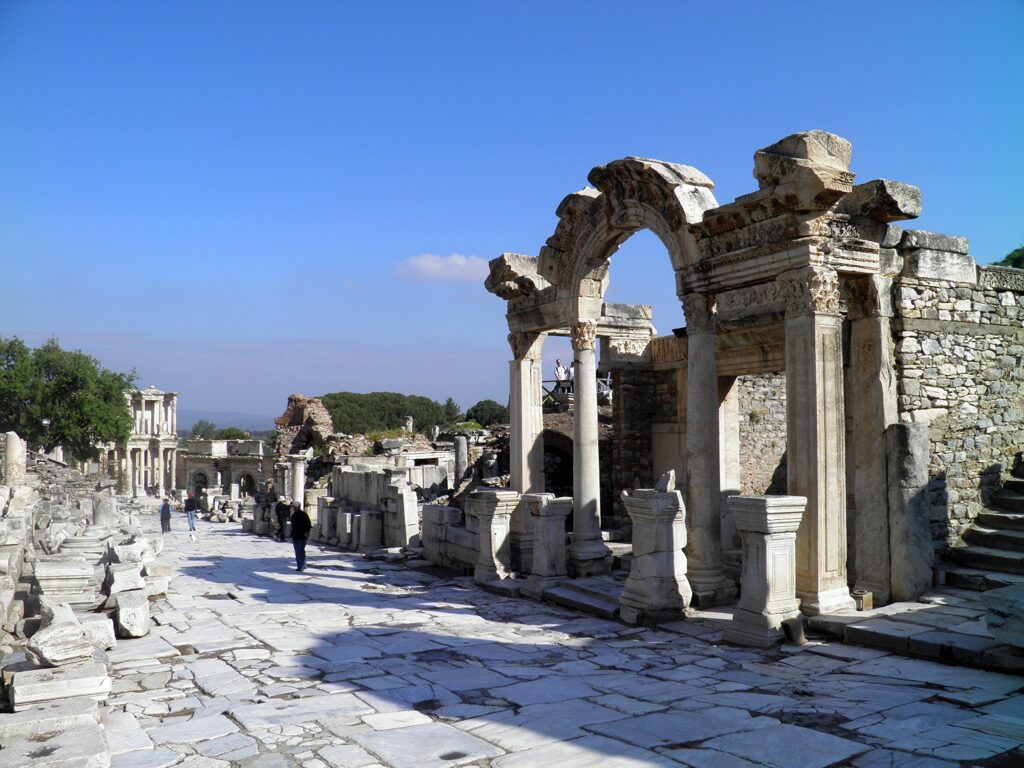
There was a marble road in the middle for the vehicles, mosaic sidewalks and shops on the each side of the street. It ends at the Celsus Library. Behind the shops and stores there were famous Terrace houses on each side of the street. Curetes name was given by an archeologist. Curetes were noble and well known priests. On the Curetes Street there were basements where statues of Ephesian donators were situated. There is only one statues still staying there on a basement. It is the statue of Alexandros who was a doctor and died because of malaria.
17- Hercules Gate
Hercules Gate is located at the beginning of Curetes street. Heracles’ relics are visible on the two columns. It is a gate dividing the upper city of Ephesus. On this gate the frieze of Goddess Nicephorus (Roman Victoria) was situated.
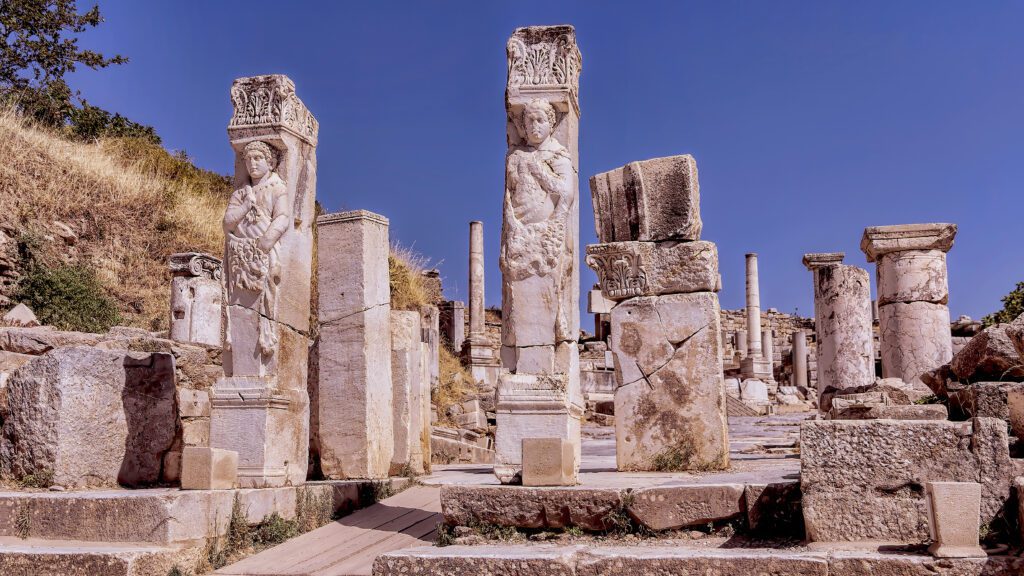
In the mythology Hercules (Heracles) hunted a lion named Nemea. That’s why Hercules is depicted with a lion head on his body and also he is wrapped into the lion fell. These two pillars which are representing Hercules from the 2nd Century. But we know that this gate was erected on the 5th Century. That means in the ancient time they removed these two pillars from somewhere else in the city to this location and used them here to build the gate.
18- Memmius Monument
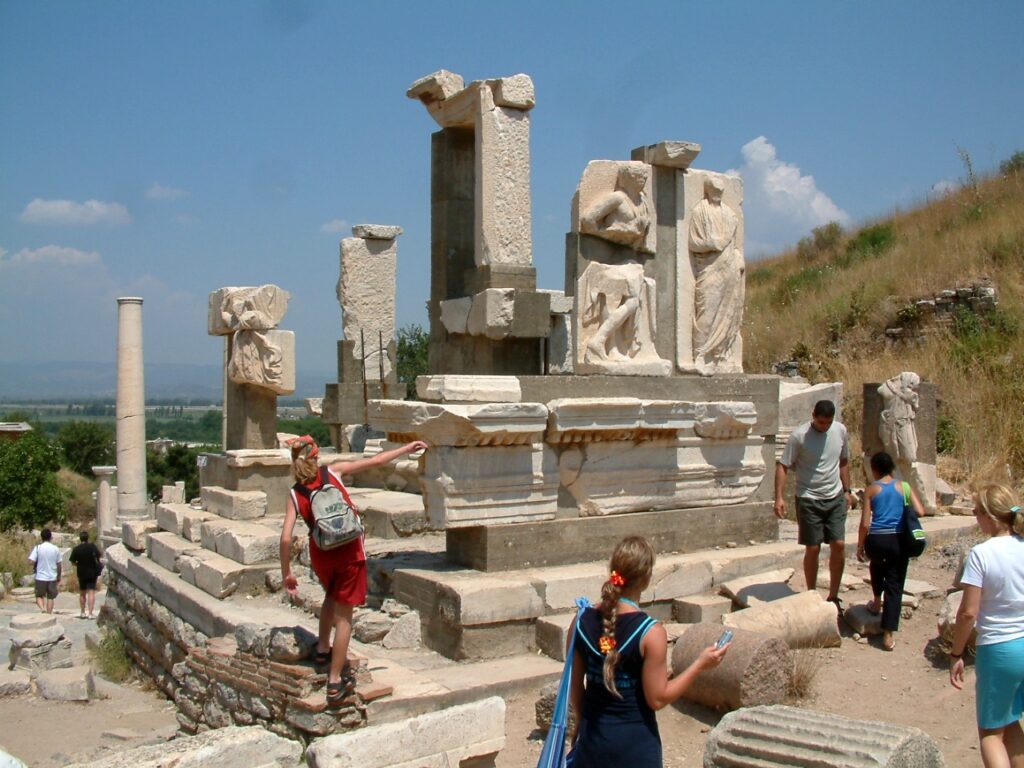
It was dedicated to the famous general Memmius and his dictator grandfather Sulla. Memmius Monument was built in the 1st Century BC. Nowadays new excavations are showing that there were pipes very close to the monument and a side street nearby. This Monument is erected by the Ephesians because Memmuis saved Ephesus from an invasion made by Mithridates Euopator, King of Pontus. Mithridates captured Ephesus in 84 BC. Memmius defeated him in the year 88 BC.
19- Temple of Domitian
It is the biggest Temple that was built in the city center. It was built for the Roman Emperor Domitian on the 3 floor podium. A huge head and left arm of a Domitian Monument is visible in the Ephesus Museum. The podium of the temple was huge and measured 100 meters by 50 meter. During the period of Domitian (81-96 A.D.), a large artificial terrace, looking onto the State agora, was built with a series of arches on two levels, and completed to the north with a monumental façade, decorated with images of barbarians (perhaps executed during the Antonine Age). Inside this large basement were a 154-meter-long cryptoporticus and shops. A double staircase led from the portico to the terrace and temple; the sacred edifice was pseudodipteral, with 8 Corinthian columns on the front and 13 on the sides, a very deep cella, and a pronaos with a wider central intercolumniation.
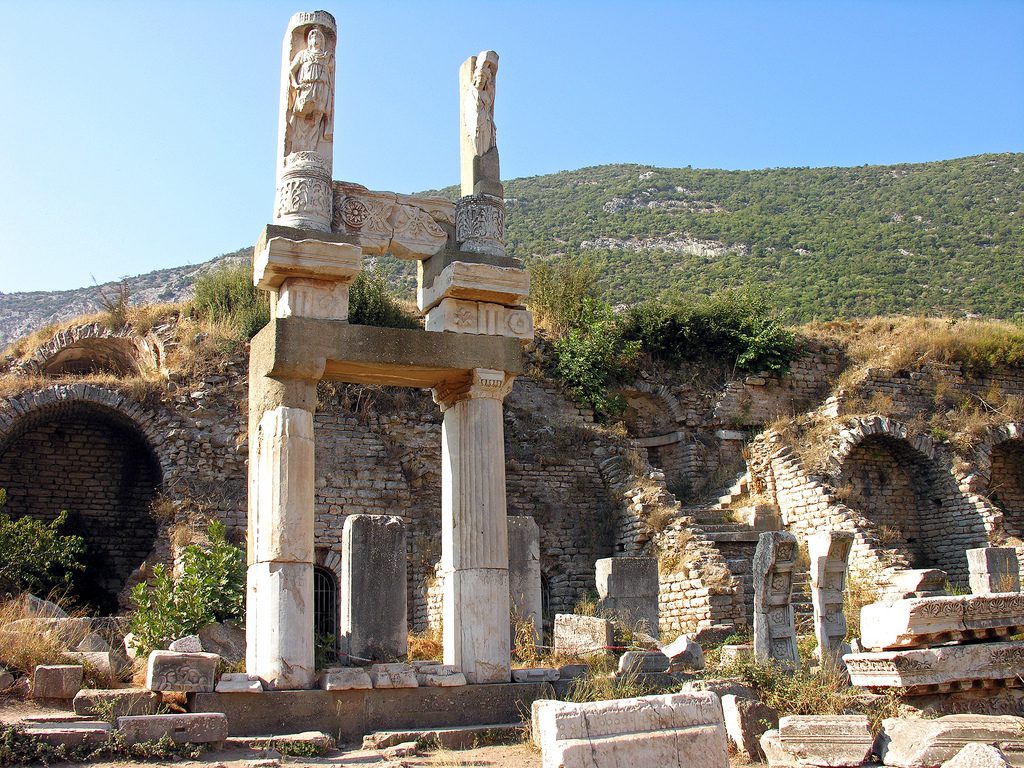
Originally dedicated to the cult of the living emperor Domitian and his wife Domitia, it was later consecrated, after the emperor’s damnatio memoriae, to his father Vespasian.
The insertion of this new complex followed the Hellenistic urban plan layout perfectly. In front of the temple, of which few traces remain on the ground, was an altar, of which much of the decoration, consisting of a heap of weapons, has been recovered. Among the fragments of imperial statues found in the temple edifice, of particular importance is a colossal portrait statue of the emperor Titus. On the second storey figures of soldiers and priestess were depicted. There was an altar in front of the temple. Domitian was known as an emperor who harmed and pursuit Christians. Before the temple was completed, a servant killed Domitian. That’s why the temple was also dedicated to Vespasianus who became the new emperor. Later, Christians destroyed the foundation.
20- Altar
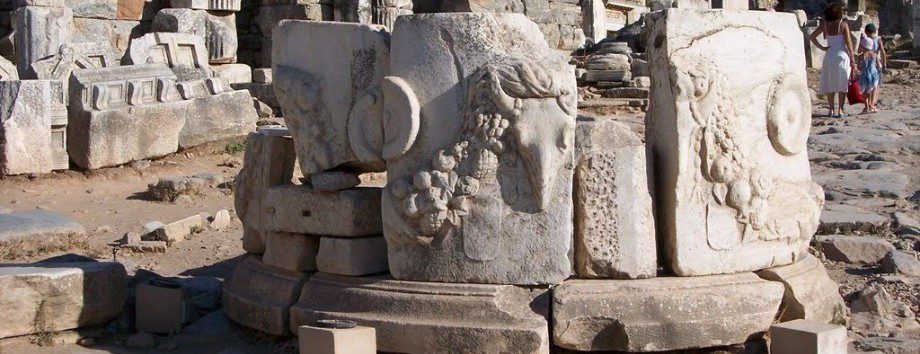
It is a ruin of an altar located in Domitian Square. There are girlands symbolzing fertality, various fruit and bull head pictures on the altar.
21- The list of Curetes
It is a list of the names of Curetes and Vestia Nuns who took a duty in Prytaneon. Curetes and the Vestal Virgins were in charge with the eternal flame, which was symbolizing the existence of the city.
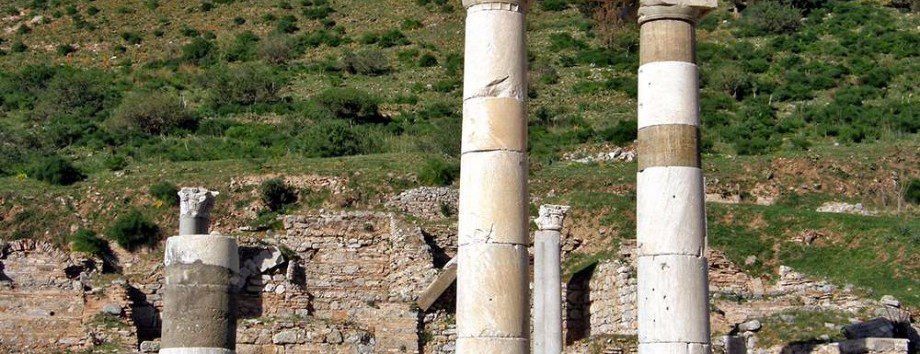
Vestal Virgins who were priestess and were named after goddess Hestia (or Vestia) who was in charge with Household and the flame. There are two re-erected Doric columns at the Prytanion. On each piece of marble there were the names of Curetes and Vestal Virgins who were in charge to keep eternal flame. The Prytaneion contained the state archives and was home to administrative rooms, an assembly hall and a dining hall. During excavations at the Prytaneion archaeologists discovered the famous statues of Artemis. You can see them in a dedicated exposition room at the Ephesus Museum in Selçuk. Related: Ephesus guide
22- Fresh water pipes
In Roman time fresh water was supplied to Ephesus from 4 different points by the aquaducts. The water was delivered to the city by the clay pipes. Today these original pipes which are 2000 years old can be seen everywhere in Ephesus.

23. The Fountain of Pollio
It is one of the many monumental fountains in Ephesus. It was dedicated to the city by the rich Roman Pollios Sextiliues. This fountain was build and dedicated to Roman Emperor Domitian. It is just opposite the temple of Domitian.

Nowadays a restoration will start in this foundation. The arch was restored a few years ago; the mythological group of Odysseus and the Polyphemus were depicted. Some relics are in the Museum of Ephesus/Selcuk. The fountain was built in the 1st Century AD.
24- Prytaneon
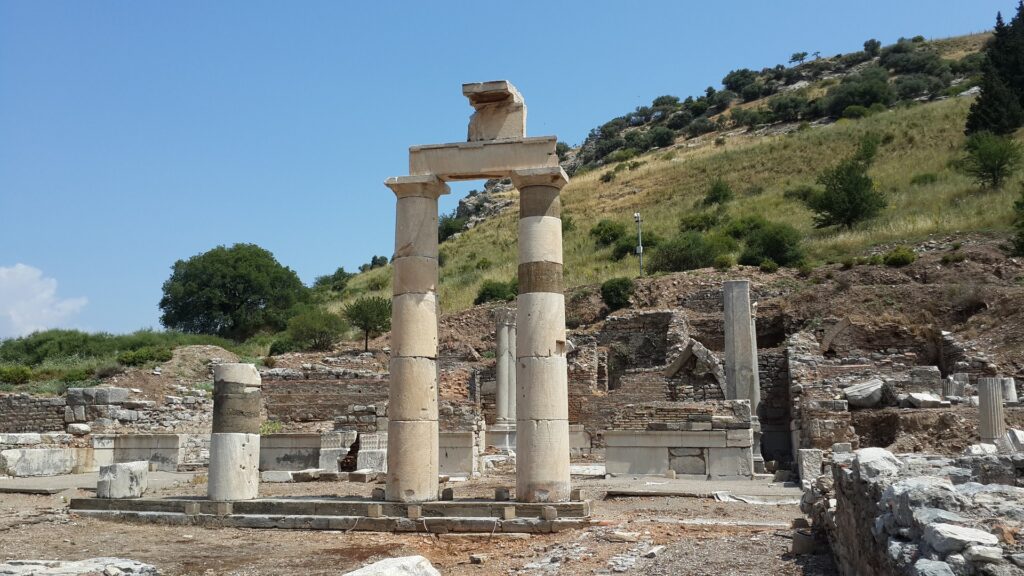
Prytaneon is the place where the holly fire was. The names of the monks and nuns who took a duty here in this place are written on the 2 columns. It was dedicated to the Goddess of Fire Hestia and was the holly center of the city.
Two big original Artemis monuments were found in the excavations in Prytaneon and visible in Ephesus Museum.
25- Odeon
It is located on the upper Ephesus and built by Romans. The Odeon is well-preserved with a capacity of 1400 seats. It was used as a concert hall and parliament. This structure is about 2000 years old and was destroyed in the earthquake in the 7th Century AD. There were vaulted gates leading to the cavea. Since there was no drainage in the orchestra, it is believed that this structure had a wooden roof. During excavations they found a marble head of the god Eros. There was stage and a stage building which was two storey. Statues of Ephesian donators were situated in the niches. Today some events are organized in this Odeon.
26- Isis Temple
It is an Egyptian Temple located in the government agora. It was dedicated to the Egypt Goddess Isis. Later in Roman time, it was dedicated to the Roman Emperor Augustus. This was the first temple dedicated to an Egyptian goddess.
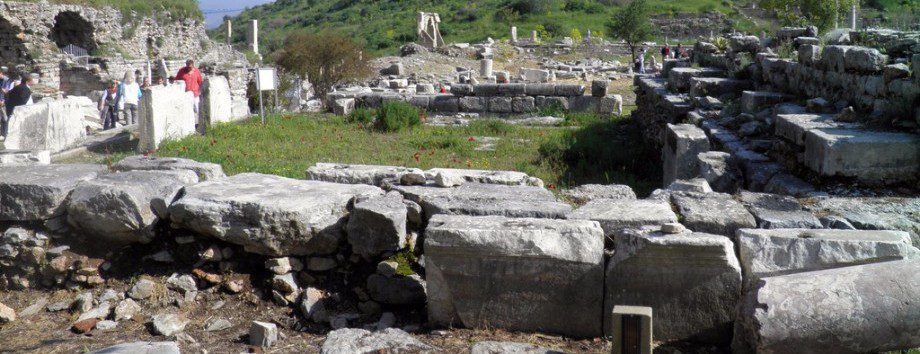
There is another temple dedicated to an Egyptian goddess named Serapes Temple near by lower agora. There was always a good relationship between Ephesus and Egypt in the ancient times. There were some Egyptian businessmen living in Ephesus. That’s why Egyptian temple were built in Ephesus.
27- State Agora or Upper Agora
It is the second agora in Ephesus. It is the government Agora. Political subjects were discussed here and it was open to public. Women and the slaves could attend the meetings here.Isis temple and an altar were built inside the Agora. It was built in a 6.000sqm are without a roof. But four sides were covered by marble column galleries. This structure was converted into a Forum in Roman period. It collapsed in the earthquake which destroyed Ephesus in the 7th Century AD. The temple of Isis was converted and dedicated to the Roman Emperor Augustus.
28- Bath of Varius or Upper Bath
It was built by the rich Roman Varius for the Ephesians and located on the upper Ephesus. This bath was built in the 1st century AD and was destroyed in the 7th Century AD.
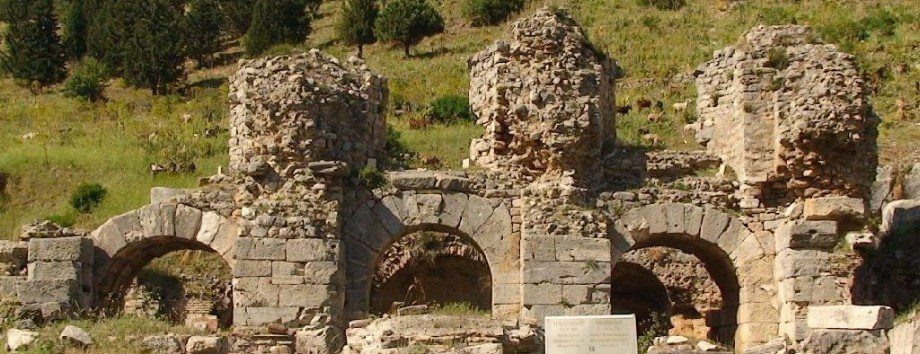
The bath was next to many public buildings so Ephesians were visiting this bath after meetings people. It was also very close to the Magnesian Gate of Ephesus. People could have bath and rest here before they entered Ephesus, having a long travel. In the Roman bath they had certain heating system. This was a kind of a floor heating system invented by the Romans called Hypocaust. Related: Ephesus guide
Practical Information
When to go to Ephesus?
Take plenty of water
Ephesus is very hot, very dry and has little in the way of shade during hot season. To make matters worse, the heat reflects up off the white stone making it almost unbearable at times. You will need plenty of water so take it with you. If (when!) you run out, you can buy some inside. It’s more expensive but this is not the time to skimp! There are small cafes and juice bars at each entrance along with toilets, information centers and friendly staff.
Dress code
A sun hat, sunglasses and appropriate walking shoes are a must. The heat and sun are unrelenting so make sure you’re properly prepared. You’ll likely be doing a fair bit of walking and the stone floors are often slippery so flip-flops and sandals are far from ideal.




